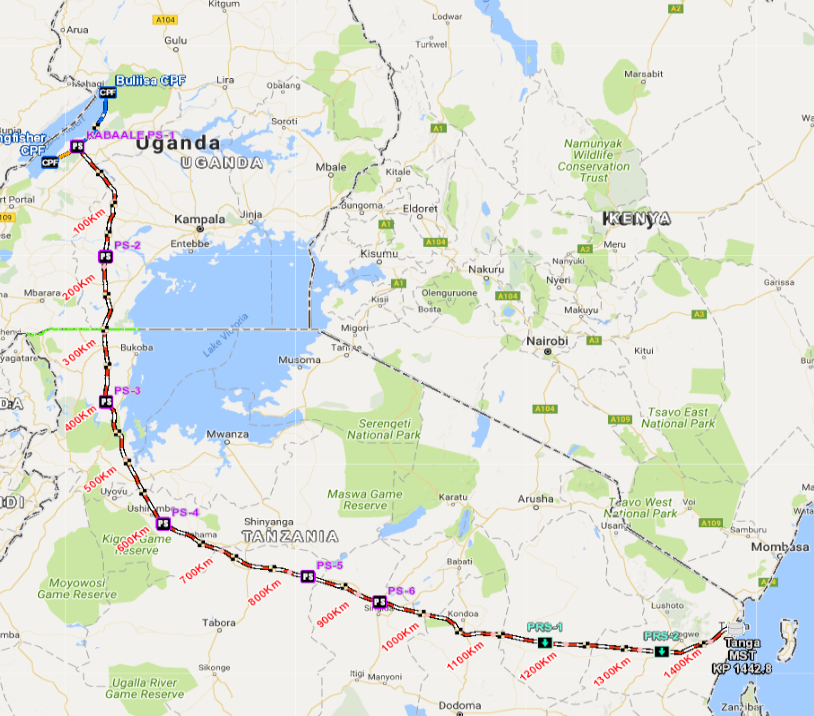ZMS Cables has recently entered into a partnership with the East Africa Crude Oil Pipeline (EACOP) project in Uganda, with Worley acting as the general contractor for the project and ZMS Cables providing significant assistance with the pipeline and power suppliers.
The East Africa Crude Oil Pipeline (EACOP) will be built between the oilfields in western Uganda and Tanga Port in Tanzania, with a total length of nearly 1,500 kilometers and a total volume of 260,000 tons of LSAW steel pipes, which is the longest heated crude oil pipeline project in the world, and one of the most important pipeline projects in the international energy market in recent years, and an important energy project under the leadership of the “One Belt, One Road” initiative of China. It is one of the most important pipeline projects in the international energy market in recent years and an important energy project under China’s “Belt and Road” initiative.

After the project is put into operation, it will form a total investment scale of $10 billion, upstream, midstream, and downstream integrated oil and gas resources delivery, refining, and distribution system, while bringing billions of dollars of annual income for the countries in the region, and vigorously promoting the rapid development of the economy of the eastern region of Africa. The pipeline is buried and once topsoil and vegetation are restored, people and animals will be able to freely traverse anywhere along the pipeline route.
The EACOP, which runs from Kabale in Uganda’s Hoima district to the Jonglei Peninsula near the Tanzanian port of Tanga, is a buried, insulated 24-inch pipeline that, along with six pumping stations, two in Uganda and four in Tanzania, will eventually arrive in Tanga, with a jetty and a wharf. Here, crude oil will be loaded onto tankers.
About the Development of the EACOP Project
Uganda’s crude oil reserves are very rich, with more than 2 billion barrels of developable equivalent, and holding on to so much oil, Uganda’s economy is not doing well, mainly also because of limited infrastructure and development capacity. CNOOC took a 28.3% interest in Uganda’s first commercial oil field in 2011 to help the country develop the oil, which is also the feeder field for the East Africa Crude Oil Pipeline.
The Ugandan government is counting on the development of the field to turn the country into a major oil producer in the world, with more than 60,000 jobs and an annual net income of $1.5 billion to $3.5 billion (about 10.54 billion to 24.6 billion yuan). Tanzania will also benefit from the East Africa Crude Oil Pipeline with an annual net income of 1 billion dollars (about 7.02 billion yuan). And for China, this is a new direction for our oil supply.

There are high hopes for the East Africa Crude Pipeline, with the Ugandan government in particular even hoping to attract more investment to build another gas pipeline along the pipeline’s land corridor. After 15 years in the making, the project finally got underway in 2021, with operations scheduled to begin in 2025. The project was to be financed with 60% loans and 40% equity, but at least 33 Western banks and insurance companies have already backed out of the loan program.
Power Level Development in Africa
In recent years, South Africa has been faced with the severe challenge of power shortages, with Statistics South Africa’s February 2023 data showing that South Africa’s electricity generation fell further from 18,024 GWh in January 2023 to 16,709 GWh in February. In response to this challenge, South Africa has implemented a variety of power restriction policies since 2007 to reduce the pressure on the national grid, but power shortages have gotten worse and worse.2023 South Africa’s Minister of Electricity has indicated that the country will face tougher power restriction initiatives this winter. Based on this background, to have a comprehensive understanding of South Africa’s power restriction events, this paper will provide an overview of the current status of South Africa’s power restriction, explore the reasons why the South African government has to adopt power restriction policies and look forward to the future development of South Africa’s power restriction policies.
On February 9, 2023, South African President Cyril Ramaphosa (Cyril Ramaphosa) delivered a State of the Nation address in Cape Town, announcing that due to the severe power crisis, South Africa had to enter a “state of disaster”. The decision allows the South African government in the face of the crisis to implement emergency supply programs, exempt hospitals and water treatment plants and other key industries such as power restrictions, and accelerate the construction of energy projects. In fact, since 2007, South Africa has experienced several power outages. As South Africa’s largest domestic state-owned enterprise as well as power supplier, the national power company Eskom will be the national grid according to plan in different places at different times to suspend the power supply, South Africa, the phenomenon of rotating blackouts around the country known as “load shedding” (Load Shedding). Over the past three years, power outages in South Africa have become more severe; in 2015, South Africa experienced 852 hours of power outages, or about 10% of the year. By 2020 and 2021, South Africa’s cumulative annual blackout time were as high as 859 hours and 1,169 hours. 2022, the total blackout time continues to rise, South Africans have to face 288 days of rotating blackouts in a year. In 2022, the total outages will continue to rise, with South Africans having to face 288 days of rotating blackouts in a year, and this year, people will have to endure up to 15 hours of blackouts per day.
The EACOP project is very influential in Africa, and ZMS has worked very well with this project and looks forward to opening a door to the cable market in and around Africa.
